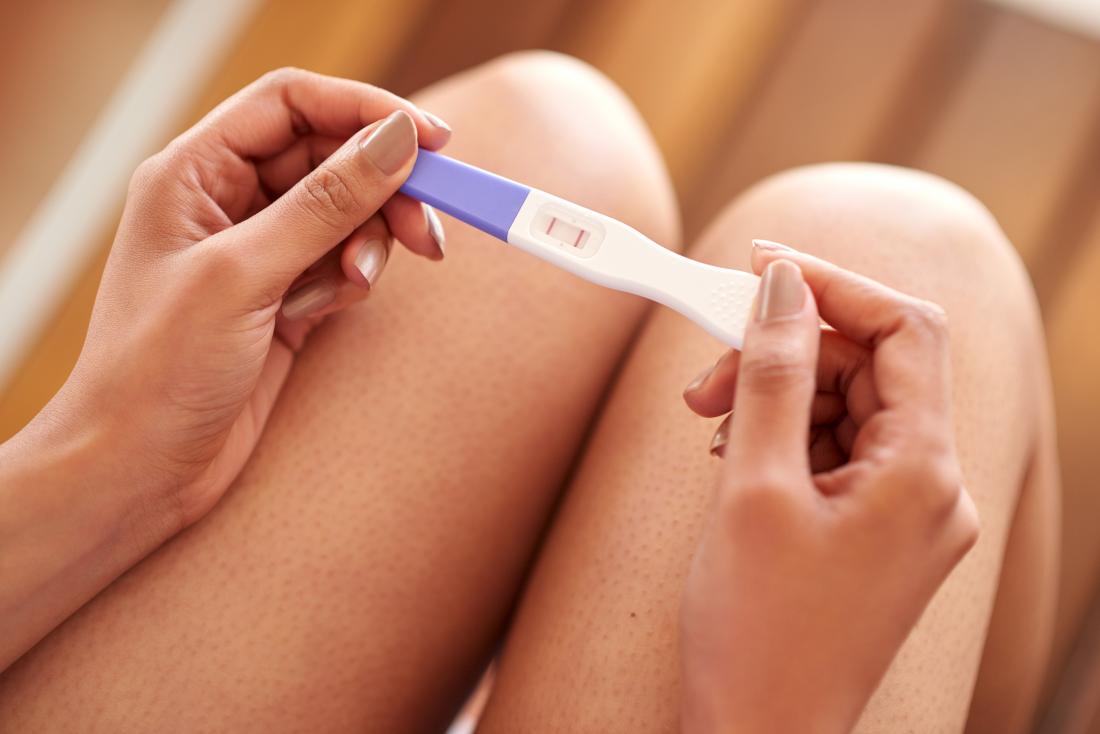An HCG pregnancy test checks human chorionic gonadotropin levels in the blood or urine. This measurement means that an HCG test can test whether a woman is pregnant, as well as whether their body is producing the right level of pregnancy hormones.
Typically, HCG levels increase steadily during the first trimester, peak, then decline as the pregnancy progresses in the second and third trimesters.
Doctors may order several HCG blood tests over a number of days in order to monitor how the HCG levels change. This HCG trend can help doctors determine how a pregnancy is developing.
In this article, we take a look at human chorionic gonadotropin (HCG) levels and how they relate to pregnancy. We also examine the potential results and accuracy of an HCG pregnancy test.

Cells that become the placenta produce the hormone HCG. The HCG levels in the body quickly rise during the first few weeks of pregnancy.
HCG levels not only signal pregnancy but are also a way to measure whether a pregnancy is developing correctly.
Very low HCG levels may point to a problem with the pregnancy, an ectopic pregnancy, or warn that a miscarriage could happen. Rapidly rising HCG levels can signal a molar pregnancy when a uterine tumor grows.
Doctors require multiple HCG measurements in order to track the development of a pregnancy.
HCG levels stop rising late in the first trimester. This leveling out may be why many women experience relief from pregnancy symptoms, such as nausea and fatigue, around this time.
Many women have very low levels of HCG in their blood and urine when they are not pregnant. HCG tests detect elevated levels.
Tests may not detect pregnancy until HCG has risen to a certain level. This requirement means tests that detect lower levels of HCG may diagnose pregnancy earlier.
Blood tests are typically more sensitive than urine tests. However, many home urine tests are highly sensitive. A
People must read the urine test instructions and follow them carefully. Most tests use lines to show when a test is positive. The test line does not have to be as dark as the control line to be positive. Any line at all indicates the test is positive.
Test strips can change color as they dry. Some people notice an evaporation line after several minutes. This is a very faint line that may look like a shadow.
An individual must check the test within the time frame the instructions indicate, usually 3 minutes. Tests read after 10 minutes may be inaccurate or show evaporation lines.
HCG tests are more likely to produce false negatives than false positives. The longer after implantation a person waits to do the test, the more accurate it will be. HCG levels begin rising when an embryo implants in the uterus.
Implantation usually happens a week or so after ovulation. It can take several days for HCG levels to rise high enough for a test to detect the hormone.
Due to how long it takes for HCG levels to rise, it is possible for a woman to be pregnant and still get a negative test. A positive result usually appears after retesting a few days later.
False-positive results are
This sensitivity means it is possible to have a positive test that a very early miscarriage then follows. A woman who delayed testing or who used a less sensitive test might not have known about the miscarriage.
In rare cases, a woman can have abnormally high levels of HCG even though they are not pregnant. The most common reasons for this include:
- a recent miscarriage
- using certain fertility drugs
- molar pregnancy, which is a pregnancy that implants but fails to grow, and which instead becomes a mass inside the uterus
Less common causes include:
- cancer, including tumors that secrete HCG
- endocrine disorders, especially pituitary gland issues
- unusual antibodies in the blood
In addition to testing too early, the following factors can cause a false negative with a urine HCG test:
- drinking lots of water so that the urine is very diluted
- getting too much or too little urine on the test strip
- testing with urine late in the day when it may be weaker
Tests that have passed their expiry date may produce false positives or negatives. Reused tests are not accurate.
HCG tests are very safe. The urine test is risk-free. The blood test can cause brief pain and occasional bruising at the puncture site.
Urine HCG tests often return false-negative results, particularly very early in pregnancy. This can be stressful and demoralizing to people struggling to become pregnant. Blood tests are typically more accurate, though even these may fail to pick up low levels of HCG in early pregnancy.
It is also possible to get an early positive result. Some women get positive tests very early in pregnancy and then have a miscarriage a few days later.
If they had not had an early HCG test, they might not have known they were pregnant. This can be a stressful and alarming experience, with some people experiencing intense grief over the lost pregnancy.
Most people first learn about a pregnancy through a home HCG pregnancy test, and many confirm that the pregnancy is healthy with blood HCG testing. Though imperfect, the test is typically reliable, particularly as a pregnancy progresses.
The information that a single HCG test provides cannot differentiate between ectopic pregnancies, molar pregnancies, or other pregnancy complications. Doctors will need further information to identify these pregnancy issues and may request further blood HCG tests to observe a person’s HCG trend.
Although abnormally high or low HCG levels can indicate a problem with the pregnancy, this is not always the case.
People who have concerns about the development of the embryo or the pregnancy should ask a healthcare provider about additional testing options.
